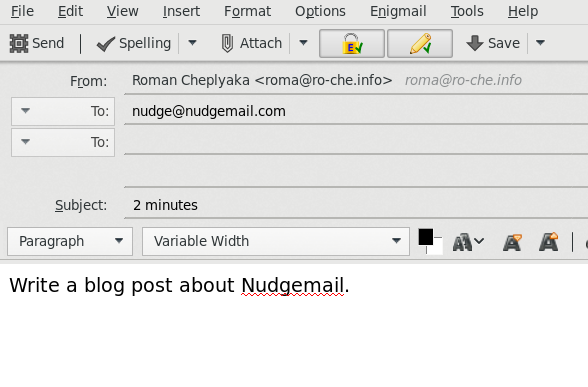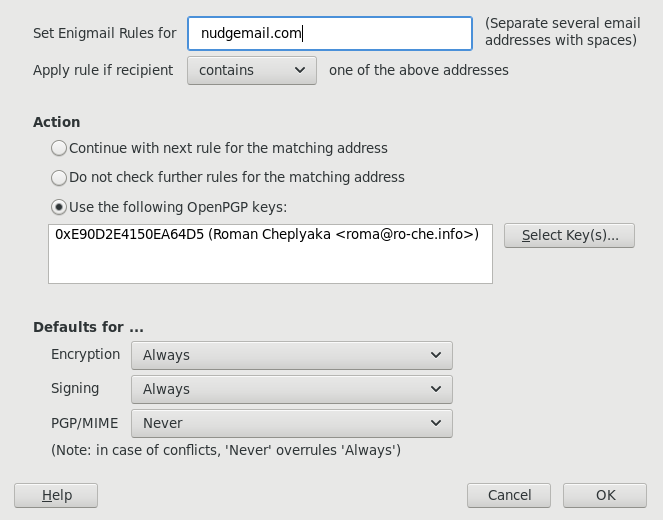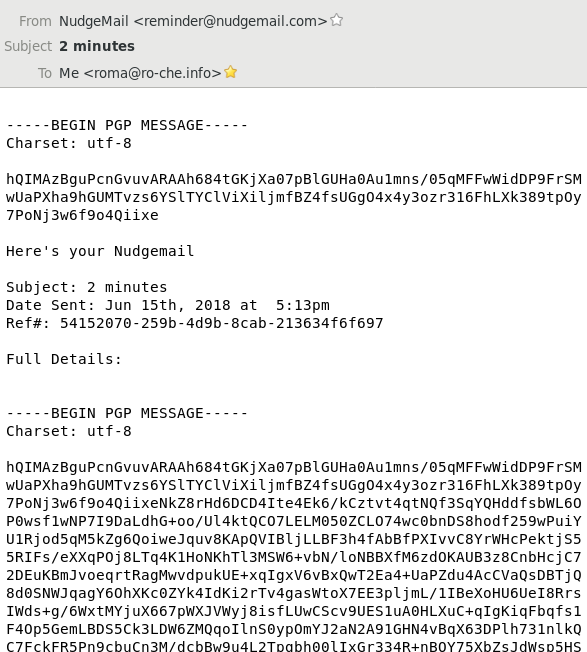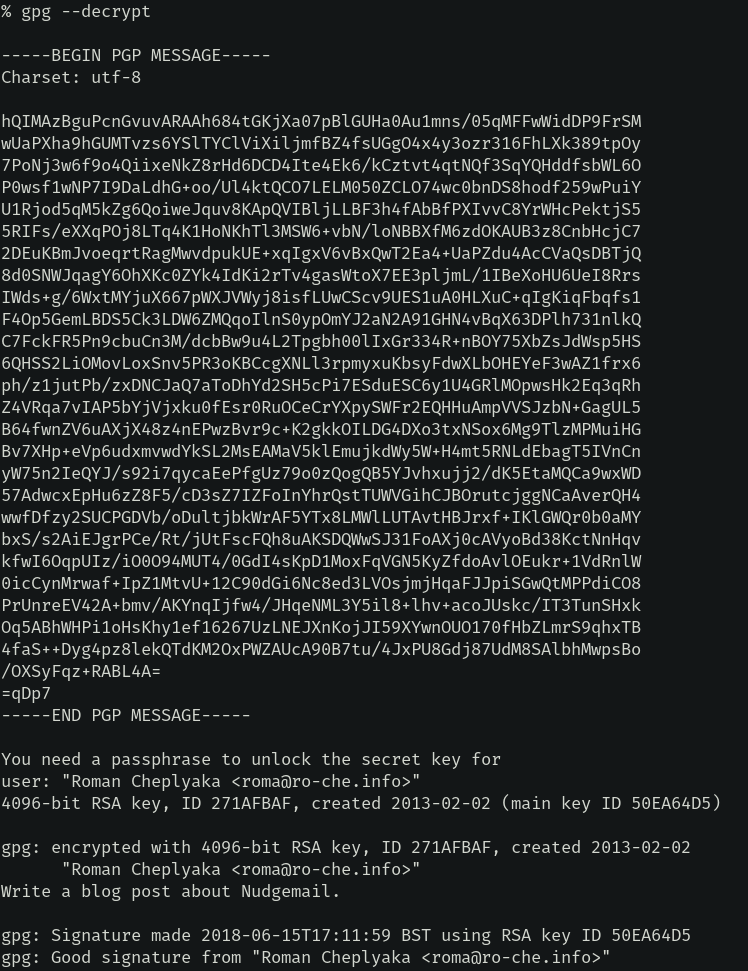Encrypted reminders with Nudgemail
Published on
I use Trello as my main GTD tool, and it works great for the short-term stuff. Sometimes, however, I have a task that I won’t be able to do until 4 months later. While I could create a Trello card and set its due date to October 20th, I will keep seeing it every time I review my trello board. Each time I’ll be reminded of this relatively unpleasant task, adding up to a significant mental cost.
The perfect solution to this problem is provided by Nudgemail. Here’s how it works:
you send an email to nudge@nudgemail.com, put the desired
time and/or date in the subject field (e.g. “October 20”), and on that
date it sends you the email back.

That has a few problems of its own, however:
There is something creepy about sending an email containing personal information to a random email address. Will they sell it to advertizers?
To be fair, their privacy policy looks very noble:
Nudgemail does not create profiles for our users, public or private. We will not share your email address or any other information transmitted through the System with anyone outside of your personally designated recipients. […] No member of the Nudgemail team or third party, aside from your designated recipients, will have direct access to emails or attachments sent to the Service.
Still feels creepy though.
When I get my email back, I might not even remember the fact that I wrote it. How do I know it was really me, and not someone giving me instructions by pretending to be me from the past?
Easy: sign and encrypt the email with GPG. Here are a few tips:
Send an empty email to
plain@nudgemail.com; this will instruct Nudgemail to send you plain-text email instead of HTML ones, which will make it easier to extract the PGP text.Nudgemail does not support attachments; so use inline PGP instead of PGP/MIME.
If you use Enigmail, it allows you to declare per-recipient rules, where you can instruct it to use your PGP key, force signing and encryption, and disable PGP/MIME as shown below.

For PGP/MIME to work better, make sure your outgoing emails are plain text. (Thunderbird itself has per-recipient rules where you can configure this.)
Here’s how the result looks:

Unfortunately Nudgemail messes with the email’s contents a bit, and it can no longer be automatically decoded, but you can easily copy-paste the PGP part and decrypt it:
